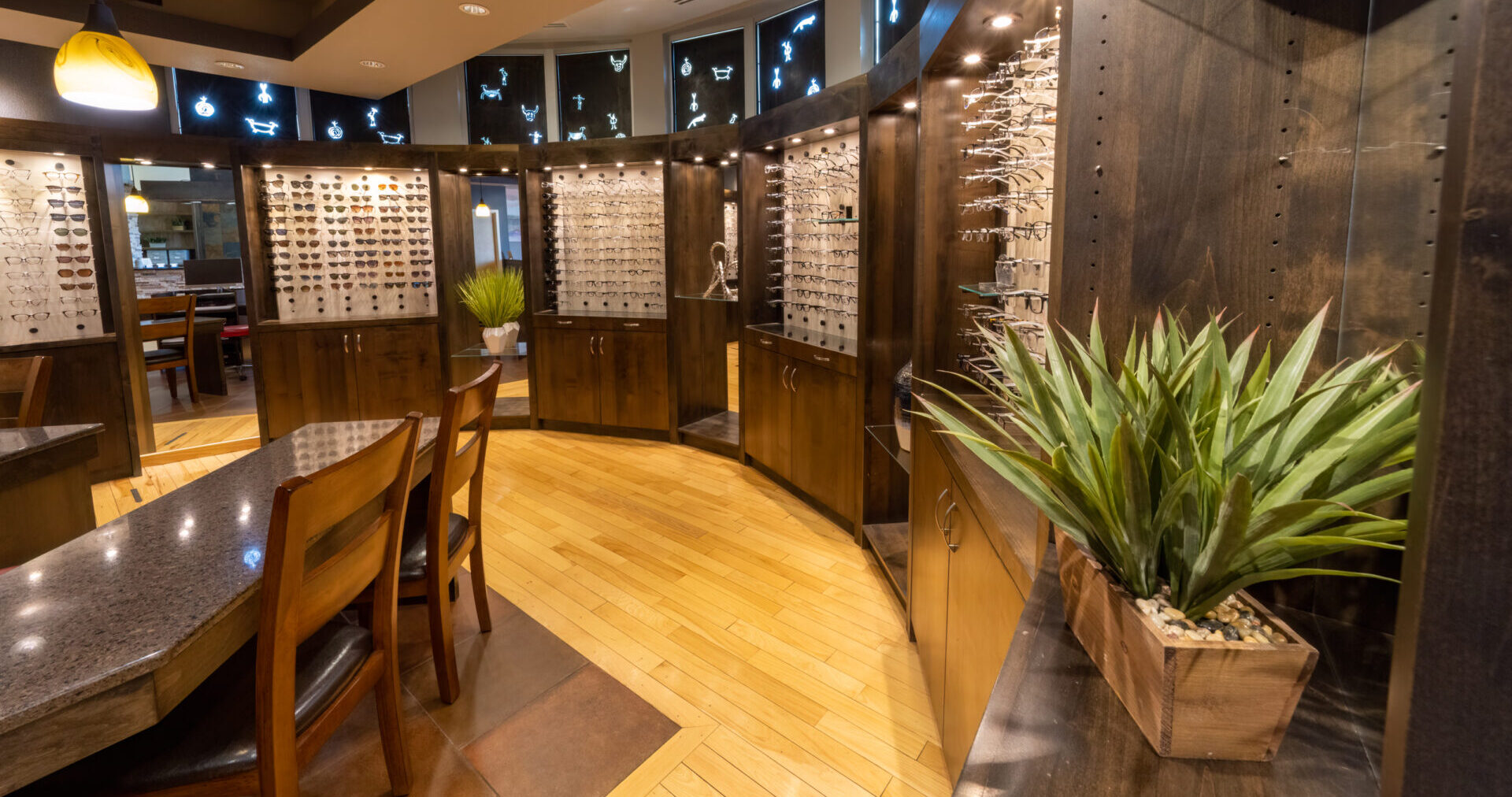What is Myopia?
Myopia is the clinical term for nearsightedness. Nearsighted eyes see near objects clearly, while objects in the distance are blurry without glasses.
In order to see clearly, the eye uses the cornea (the clear window in front of the eye) and the lens inside the eye to adjust the focus of light entering the eye. The clearest images are seen when light is focused accurately on the back of the eye (the retina). If the eye is too short or too long, the ability to accurately see the world decreases because the cornea and lens cannot focus the light onto the back of the eye. Myopia usually results from the eye being too long.
Just like feet get bigger and children get taller, the nearsighted eye tends to get longer over time. This means nearsighted children often need to get stronger glasses every year as their eyes continue to grow.
What causes Myopia?
Environment also seems to play a role in the development of nearsightedness. Research has found that more time spent outdoors may protect against nearsightedness.
How can I correct myopia?
Myopia causes far away objects to look blurry, but the blurry vision can be corrected with glasses, contact lenses or refractive surgery. There are also ways to control the growth of myopia.
Why try to control myopia growth?
Myopia treatments have been shown to reduce a person’s myopia by up to 50 percent, which could reduce the strength of the prescription needed in the future. Myopia has also been associated with common vision-threatening conditions like cataracts, primary open angle glaucoma and retinal detachments The risk of developing these conditions depends on the severity of the myopia; therefore, reducing a person’s level of myopia could also decrease his or her chances of developing one of these vision-threatening diseases.
What are some of the treatments for controlling myopia?
Corneal Reshaping Contact Lenses (CRT lenses)
Corneal reshaping contact lenses are worn during sleep and are removed in the morning. They temporarily change the shape of the cornea so that a person can see clearly all day long without glasses or contact lenses. They are also thought to slow myopia development because they bend light that enters the eye in a beneficial way. Corneal reshaping contact lenses have been shown to reduce myopia progression on average by about 50 percent.
Soft Multifocal Contact Lenses (MiSight Contact Lenses)
Soft multifocal contact lenses are routinely worn to help people aged 40 years and older read clearly as well as see far away. Soft multifocal contact lenses also are thought to slow myopia by bending light that enters the eye in a beneficial way. These lenses have been shown to reduce myopia progression on average by about 50 percent.
Are myopia treatments safe?
Children (ages 8-12) and teens (ages 13-17), both of which are age groups that are commonly fitted with contact lenses, are at an equally low risk for developing contact lens-related problems or being non-compliant. Children and teens are able to wear their lenses for a similar amount of time each day. In addition, both groups feel that contact lenses improved their social acceptance, appearance, ability to play sports and overall satisfaction with their vision correction.
Contact our office today to schedule an appointment to learn more.
